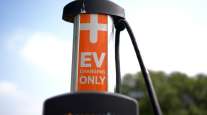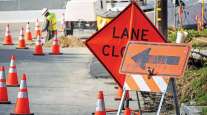Features Coordinator
Bridge Monitoring Aided by Sensor Technology

Bridge sensor systems are becoming integrated in the engineering and construction of spans across the country to monitor everything from load stress to movement.
After the collapse of the Interstate 35W bridge in Minnesota a decade ago, the monitoring systems took on greater importance and have been more widely used on vehicle and railroad bridges, according to experts.
The new I-35W bridge was outfitted with “state-of-the-art smart bridge technology that monitors bridge behavior in real time and provides valuable feedback,” according to Figg Engineering Group.
Figg designed the new span, working with the Minnesota Department of Transportation.
“Our original intent of having the sensors on the bridge was that it gave us a better understanding of how the bridge is behaving, and we were able to compare it with assumptions made in design,” said Ben Jilk, principal engineer for the MnDOT.

A state-of-the art bridge sensor. (MnDOT)
The smart bridge is outfitted with systems that read such factors as bridge temperature, movement and stresses. The sensors located inside the concrete measure strain and temperature, while others fastened onto the outside of bridge look more closely at strain and vibration, Jilk said.
MnDOT joined forces with the University of Minnesota-Twin Cities to monitor data from the sensors.
“They are looking at how they can use the data to characterize the behavior of the bridge,” Jilk said.
Pennsylvania also uses similar sensor technology that is built into the I-81 Wade Bridge. The bridge went through a two-year, $42 million rehabilitation in 2010.
“As part of a recent rehabilitation project, the instrumentation was installed to monitor the performance of the retrofit of the bridge’s piers and substructure,” said Jan Huzvar, spokesman for the Pennsylvania DOT. The Wade Bridge is the only state-monitored bridge.
Vehicular bridges are not the only type that are being monitored. There has been a big uptick in monitoring railroad bridges, according to Walt Bleser, president of Sensr, a monitoring company that also installs the systems.
“In the last two years we have seen a trend in acceptance by Class 1 railroads to use bridge monitoring,” Bleser said.
He said that he has seen an uptick in monitoring needs when it comes bridge strikes, but noted that sensor monitoring hasn’t been taking off with vehicle bridges.
“More often than not it seems a lot of DOTs simply do not have a good mechanism to purchase these systems, maybe because their capital budgets have already been predetermined for the year and they didn’t include monitoring or they just don’t have enough budget,” Bleser said.

Monitoring systems came to the fore after the 2007 collapse of the I-35W bridge. (Kari Goodnough/Bloomberg News)
Sensor monitoring needs are different depending on the bridge’s intended use. The average age of a vehicle bridge is 42 years, according to the Federal Highway Administration. Railroad bridges tend to be significantly older, according to the Association of American Railroads.
“When it comes to railroad bridges, age can be an asset. Older railroad bridges were often designed and built to carry far heavier trains than those in use today,” according to the AAR.
Comprehensive monitoring gives DOTs greater understanding for future projects, Jilk said, and placing sensors in drill shafts, foundations and externally gives the most in-depth picture for data analysis.




